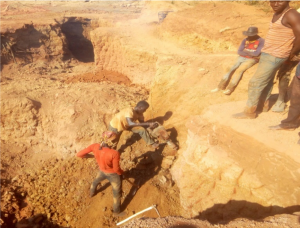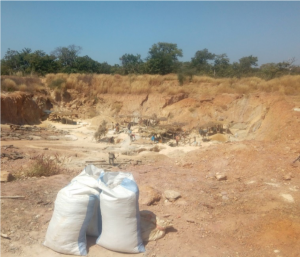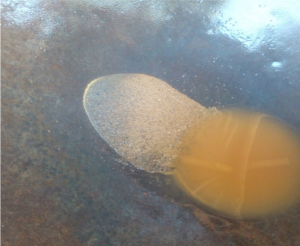KODAL MINERALS, THROUGH ITS WHOLLY OWNED SUBSIDIARY IGS-MALI SARL, HAS BEEN GRANTED EXCLUSIVE RIGHTS TO EXPLORE AND AN OPTION TO PURCHASE UP TO 100% OF TWO CONCESSIONS (FININKO AND FOUTIÈRE) IN MALI TOTALLING 301KM2, TOGETHER KNOWN AS THE FATOU PROJECT.
Fatou consists of the Fininko Concession and Foutière Convention, and is located 280km south of Bamako, the capital city of Mali. Fatou forms a contiguous landholding exceeding 300km2 and has been acquired through agreements with local vendors. The Fatou Project is complementary to Kodal’s existing activities in southern Mali being 100km to the south of the town of Bougouni and only 30km to the west of the Nangalasso Gold Project.
The project is advanced with previous exploration defining preliminary mineral resource estimates. Kodal considers Fatou to have excellent exploration prospects that are drill ready and have potential to expand the defined zones of gold mineralisation. Historic exploration was completed by AngloGold Ashanti and Rockridge Capital Corp, a Canadian listed company, which explored the project from 2010 to 2014 resulting in a preliminary Mineral Resource estimate exceeding 350,000 ounces gold for the Fatou Main prospect.
Geological Setting
The Fatou Project is hosted within the Birimian sequence of West Africa, a sequence of mafic volcanic rocks separated by sedimentary basins and are intruded by granitic rocks of varying composition. The geology at Fatou is mostly sedimentary sequences interlayered phyllite and siltstone along with abundant volcaniclastic and tuffaceous strata. These rocks are intruded by three phases of granodiorite occurring as small plutons and stocks. Minor mafic and felsic dikes occur as tabular stocks. The geology is weathered to a depth of 75m (typical depth between 35m and 50m) and laterite capped mesa are formed with the laterite extending for several metres’ depth.
The dominant structural feature observed at Fatou is a major northwest-trending shear zone which aligns the gold targets, local shear fabrics, folds, cross faults, low angle faults, planar fabrics, and crenulation. The northwest shears are inferred to be steeply dipping to slightly east-dipping and further low-angle structures have been interpreted in drill hole modelling that dip to the east.





Photos – Active artisanal workings within the Fatou Project and an image of gold recovered from workings
Gold Mineralisation
Historic exploration identified gold mineralisation occurring as free gold in multi-stage quartz and quartz-carbonate ± sulphide veins. Sulphides associated with gold include pyrite, pyrrhotite, arsenopyrite, and possible bismuthinite. Gold-bearing veins are mostly subvertical in orientation striking N-S to north-westerly and appear to occur in clusters and local envelopes.
Gold in quartz and quartz-carbonate-sulphide veins are orogenic and typical of most gold occurrences throughout West Africa and in other greenstone terranes. These veins formed at upper mesothermal depths (5-10km) and are characterised by brittle to brittle-ductile fracturing of the host rock followed by infiltration of hydrothermal fluids that deposited quartz, carbonate, and metallic minerals including gold.
An initial Mineral Resource estimate was prepared in November 2014 for previous explorer Rockridge of over 350,000 ounces gold (0.6g/t cut-off) and was estimated for only the Fatou Main prospect and represent only part of the potential of the project.
Previous Exploration
Previous work on the Fatou concession includes regional soil sampling by United Nations Development Program in the early 1980s and further soil sampling by Orgagoe, a Malian company later in the 1980s. In the late 1990s to 2001, AngloGold undertook exploration that included soil sampling, aerial geophysics, RAB drilling, and RC drilling. Results indicated the presence of gold in surface and subsurface samples, but no follow-up work was completed due to changes in corporate exploration strategy.
Rockridge commenced exploration work in 2010 which has included extensive soil sampling, geophysical surveys, drilling, mapping, and initial metallurgical tests. This work culminated in the initial resource estimate.
Proposed Exploration
Kodal is finalising exploration plans commencing at Fatou Main as a first priority and then at Fininko located to the south. The object of this initial exploration drilling will be to confirm and expand the know gold mineralisation and provide data to support data for a JORC compliant Mineral Resource estimate to be completed. In addition, the Company will target new areas of artisanal mining, previous untested geochemical anomalies and target the Foutière concessions for reconnaissance exploration along the southern strike of the identified mineralised structure.
For further information on the acquisition of Fatou and the commercial terms, Click here.